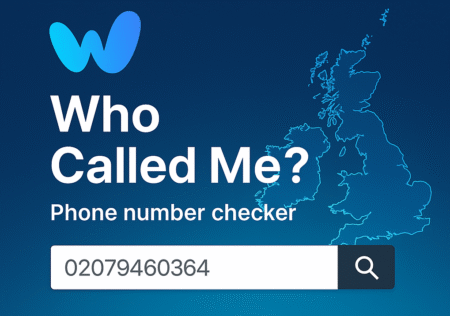Digital language is evolving rapidly, creating new words and concepts that often blur the boundaries between technical jargon, memes, and social commentary. One such intriguing term is schedow a word that encapsulates the modern digital experience, borrowing from and expanding upon the ideas of digital shadows, privacy, and online identity. By synthesising insights from articles and authoritative sources, let’s explore what schedow means, why it matters, and how it reflects the complexities of our digital existence.
What Is Schedow? A Digital Term for Our Time
Schedow appears at first to be a clever mashup or typo of “shadow,” yet its meaning in the digital realm is both intentional and culturally resonant. Harnessing the metaphor of shadows, schedow refers specifically to the traces, fragments, and representations we leave behind in the digital world, often passively, unconsciously, and sometimes without consent.
- Digital Shadow vs. Schedow: While “digital shadow” is an established concept in cybersecurity and data science, representing the unintentional digital footprint created by our online activities, schedow moves further, emerging as a symbol for the partial, fragmented, and sometimes ambiguous nature of our digital imprint.
- Identity in the Cloud: Schedow fits within a broader movement to name and understand our digital identities, pieced together from social media posts, browsing history, app preferences, and even algorithmic predictions.
The Origins and Evolution of Schedow
Rooted in Digital Shadows
The concept of a digital shadow finds its origins in analogies borrowed from art, psychology, and technology. Digital shadows are:
- Passive Data Traces: Created as we interact with various digital services, including apps, devices, and platforms. These traces are often collected without our direct input or awareness.
- Partial Representations: Like a shadow on the wall, our digital shadows reflect only some contours and details, not the whole person.
- Dynamic and Changing: As our digital selves evolve, so does the schedow, updated with every interaction, movement, or status change online.
Schedow as a Social and Cultural Phenomenon
Schedow isn’t just about technology. It’s also about the social experience of being online:
- Cultural Resonance: Just as shadows have symbolised hidden truths or unconscious parts of the self in mythology and Jungian psychology, schedow comes to represent the unacknowledged aspects of our online persona.
- Memes and Vernacular: Schedow serves as a playful, meme-able term that bridges cyber language with everyday human experiences.
- Collective Identity: Online communities can develop a shared schedow, collective memories, narratives, and digital traces that outlast any individual post or comment.
Schedow, Privacy, and Cybersecurity
Our schedow is not just an abstract idea, it has real implications for privacy, security, and law:
- Data Collection and Consent: Much of our schedow is built from data harvested without explicit consent, ranging from activity logs to inferred behaviours and preferences. Companies, ISPs, and cloud services retain, repack, and sometimes sell these data traces.
- Profiling and Targeting: Schedows can be reassembled into detailed user profiles, used for personalised advertising, or, at worst, for surveillance and manipulation.
- Cybersecurity Risks: Schedow overlaps with concepts like “shadow IT” and “shadow data”—terms describing the hazards of unsanctioned apps and uncontrolled data that escape the attention and protection of IT teams.
- Legal Implications: From GDPR to local privacy laws, the existence of a schedow raises questions about data ownership, rights to erasure, and ethical data use.
Schedow versus Shadow: Key Differences
| Term | Meaning | Context |
| Shadow | Absence of light; metaphor for hidden aspects | Physical/Psychological |
| Digital Shadow | Passive digital traces left behind | Cybersecurity/Identity |
| Schedow | The evolving, fragmented record of digital existence | Social/Tech/Cultural |
Schedow in Practice
- Technology: Used in engineering, IoT, and industrial systems to mirror the state and history of physical assets or processes.
- Web Development: Though unrelated, similarities appear in concepts like “shadow DOM,” which encapsulate and protect pieces of code or interface.
- Daily Life: Every digital interaction builds your schedow. Social media, emails, shopping, locations, all become part of your digital record.
- Organisational Dynamics: Schedow maps onto the idea of “shadow culture,” describing the hidden norms and behaviours beneath formal organisational policies.
Psychological and Social Implications
- Self-Awareness: Recognising your schedow increases mindfulness about what you reveal online, and what remains hidden.
- Healing and Growth: Social “shadow work” and digital “schedow work” invite us to confront and integrate our online behaviours, promoting healthier digital habits and communities.
- Collective Memory: Schedows help create communal identities, recording both celebrated and repressed stories.
FAQs About Schedow
What is schedow?
Schedow is a modern digital term for the passive, evolving record of traces and data points that you leave behind online. It is similar to a digital shadow but emphasises the complex and sometimes fragmented nature of our digital identities.
Is a schedow the same as a digital shadow?
Not exactly. A digital shadow is the sum total of passive data collected as you use digital platforms. Schedow refers more specifically to the evolving and sometimes ambiguous footprint that emerges from both intentional and unintentional online actions.
Why is my schedow important?
Your schedow can be used to build detailed profiles about you, target you with ads, assess risks, and even compromise your privacy if not managed. Awareness of your schedow helps you protect your digital identity.
Can I erase my schedow?
While you can delete some data (like social media posts or browser history), much of your schedow, especially data collected by third parties, is persistent and difficult to fully erase. Privacy controls and mindful digital behaviour can help minimise your schedow.
How does schedow influence culture?
Schedows shape digital culture by fragmenting and remixing identities, surfacing in internet memes, trends, and online organisational behaviour. They reflect both conscious and unconscious digital habits.
Does schedow have legal implications?
Yes. There is an ongoing debate around rights to digital data, privacy protections, and how companies can use the vast schedows they collect. Laws like GDPR aim to address these issues, but enforcement and awareness are still evolving.
How can I safeguard my schedow?
- Use secure privacy settings
- Regularly audit your online presence
- Limit third-party access to your data
- Be mindful of terms of service and consent forms
- Update passwords and security practices routinely
The Future of Schedow: Navigating the Digital Frontier
As the digital realm continues to expand, the concept of schedow is poised to become more than just a quirky online term; it will be central to how we understand, manage, and reclaim ownership over our digital lives. From personal data management to legal frameworks, schedow invites us to examine the interplay between visibility and invisibility, identity and anonymity, empowerment and vulnerability.
Schedow, in essence, is about awareness: knowing what you leave behind, understanding how it’s used, and consciously deciding what kind of digital shadow you want to cast.
Key Points Recap
- Schedow captures the evolving, partial digital record each person creates online.
- It draws from concepts like digital shadows but embodies a more nuanced, culturally resonant view.
- Schedow raises vital questions about privacy, data rights, and the complexity of online identity.
- Everyone has a schedow, built with every click, post, and scroll.
- Being mindful of schedow means becoming a safer, more intentional digital citizen.
Final Thoughts
In a world mediated by screens and data flows, understanding your schedow is more than a technical concern; it’s a pathway to digital self-awareness, security, and ethical engagement. By elevating this modern digital term, we bridge the mystery of the “shadow” with the realities of contemporary online life, making schedow a touchstone for anyone seeking to navigate the complexities of identity, privacy, and culture in the digital age.










